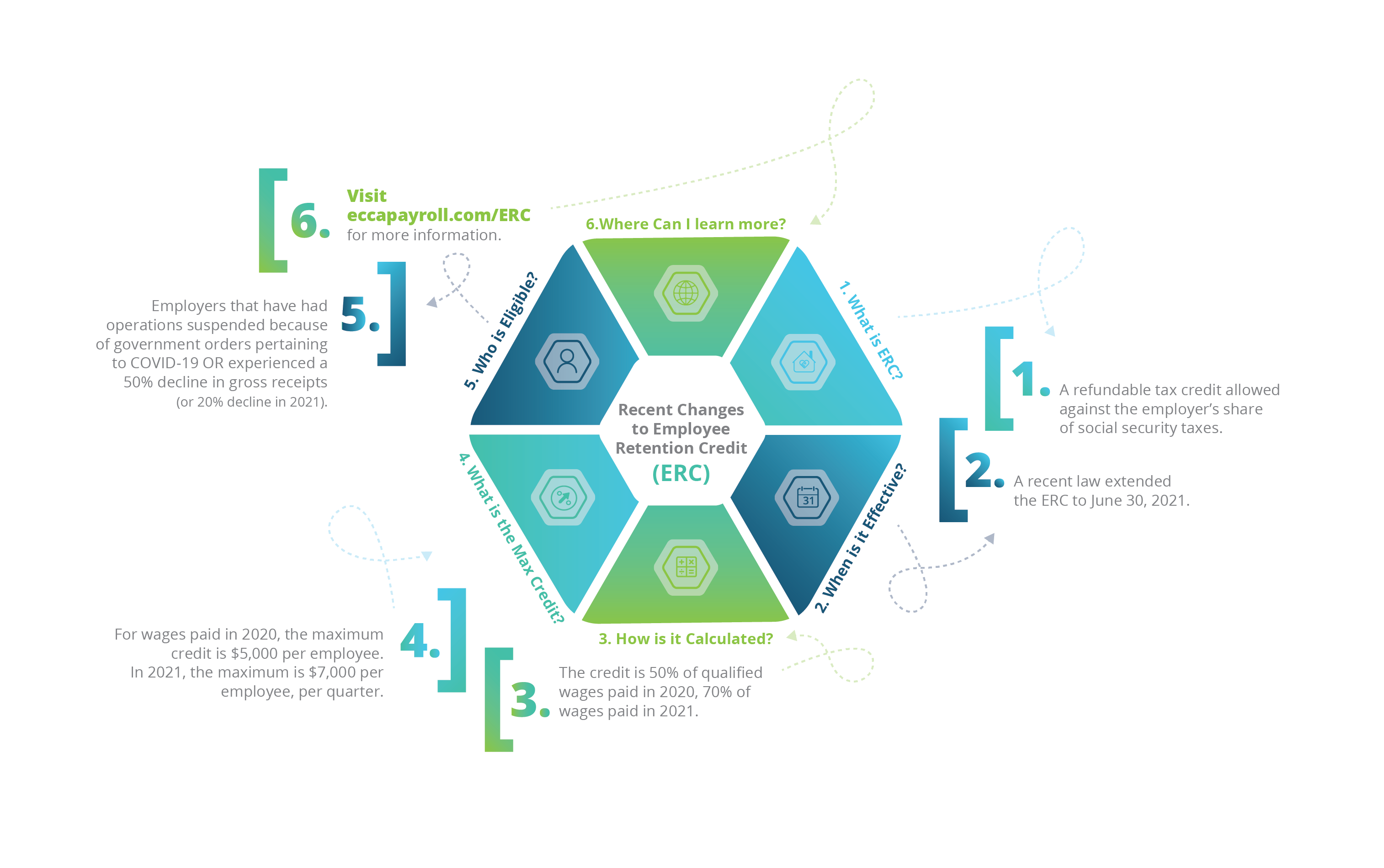The Employee Retention Credit
Covid-19 Relief | Jan 25, 2021
Share This Page
Introduced in the Coronavirus Aid, Relief, and Economic Security (CARES) Act, the Employee Retention Credit (ERC) is a refundable tax credit against certain employer taxes. The goal was to help businesses retain and pay staff, even if forced to shut down due to COVID-19 mandates.
The Consolidated Appropriations Act, 2021 (Act) - signed into law on December 27, 2020 - modified and expanded the ERC.
Initially, employers that received a Paycheck Protection Program (PPP) loan were not eligible for the ERC. However, the Act made the ERC available to employers who took out a PPP loan, albeit with some conditions (more on that below).
In addition to making the ERC available to PPP loan borrowers, the Act introduced other modifications. Some changes apply retroactively to the beginning of the program; others, meanwhile, only apply going forward.
What is the Employee Retention Credit?
For eligible employers, the ERC is a refundable tax credit allowed against the employer’s share of social security taxes.
How is the ERC calculated?
Because of changes introduced by the Act, there are two different ways the credit is calculated. The calculation depends upon when the qualified wages were paid.
For wages paid between March 12, 2020 and December 31, 2020
The credit is 50% of wages, up to $10,000 per employee. This results in a maximum, annual credit of $5,000 per employee.
Please note: any wages paid using forgiven PPP loan proceeds are NOT eligible.
For wages paid between January 1, 2021 and June 30, 2021
The Act increased the amount to 70% of wages, up to $10,000 per employee, per quarter. The maximum credit is now $14,000 per employee for the first half of 2021 (i.e. the first and second quarters).

What are qualified wages?
There are some differences in qualified wages between those paid in 2020 and those in 2021 because of the Act.
For wages paid in 2020, employers that averaged...
More than 100 full-time employees
Only wages paid to employees who did not provide any services due to the suspension of operations or a decline in business are qualified.
100 or fewer full-time employees
Wages paid to any employee, regardless if the employee provided services or not, are qualified.
For wages paid in 2021, the Act increased the full-time employee threshold from 100 to 500 employees.
Qualified wages (for both 2020 and 2021) include amounts paid towards a group health plan, but only to the extent that the amounts are excluded from employees’ gross income.
What wages are not qualified?
The following wages are not used when calculating the ERC:
- Wages paid using forgivable PPP loan proceeds.
- Any wages where the employer received a tax credit for paid sick and family leave under the Families First Coronavirus Response Act (FFCRA).
- Wages paid for paid family and medical leave (FMLA).
- Employees are not counted if an employer is allowed a Work Opportunity Tax Credit (WOTC).
As of this writing, the IRS and Department of the Treasury have not issued any further guidance regarding the ERC and forgivable PPP loans.
What employers are eligible for the ERC?
While the size of the company is used to determine how the credit is calculated, it has no impact on a company's overall eligibility.
In order to be eligible for the ERC, a company must experience one of the following:
- Have operations fully or partially suspended as a result of government orders pertaining to COVID-19.
- Experienced a 50% decline in gross receipts during the calendar quarter compared to the same quarter in 2019.
Starting in 2021, the Act...
- Reduced the gross receipts test from a 50% to a 20% decline;
- Introduced a safe harbor that allows employers to use the preceding calendar quarter to determine their eligibility; and
- If a business did not exist at the beginning of the same quarter of 2019, they can use the same quarter in 2020 for comparison.
For More Information
The IRS has an extensive FAQ available regarding the ERC.
However, given the unique circumstances of each company – including, but not limited to, any PPP loans and the impact COVID-19 has had on their operations – it is best to consult with your financial advisors about how the ERC applies to your company.
Disclaimer: This is simply a summary of some parts of the Employee Retention Credit (ERC). This does not constitute legal advice. Always check with your own legal and/or financial advisors as to how this credit and others may apply to you or your business.